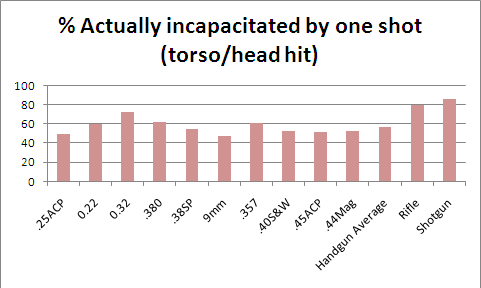I would be interested in where it was that it was so definitely determined that .32 ACP was inadequate for self-defense and that bullets consistently underpenetrate, because it's strange how it managed to last so long as a popular cartridge for self-defense and even duty if it were truly so unreliable as folks assert that it is.
I theorize that the cartridge is not in fact an inadequate self-defense cartridge which consistently fails to penetrate deeply enough, but rather that like so many other cartridges, that it historically wasn't a reliable performer with Jacketed Hollowpoint Ammunition, and requires more careful ammo selection. Furthermore, I believe that the persistent modern sentiment that it makes no sense to carry one cartridge if you can carry a more powerful cartridge in a gun of similar size killed the popularity of .32 ACP once .380 ACP pistols started being chambered in pistols of similar size in the past decade or so, similarly to how .380 ACP has lost some ground to 9mm Luger in recent years for the same reason, or how up until the FBI switched back to 9mm Luger, the prevailing sentiment dictated that it made more sense to carry .40 S&W over 9mm Luger since the guns were roughly equal in size.
Factually speaking, the field of firearms is one of the slowest evolving fields in terms of technological advancement, with most firearms designs being minor variations of designs which came out a century ago or even older.
Medicine, electronics, telecommunications, vehicles, even household appliances have grown by leaps and bounds. In fact, just about the only thing that has seen as little advancement as ballistic weaponry is waste management/disposal.
Heck, the most praised accomplishment in the field of firearms in recent years is finally getting Jacketed Hollowpoint Bullets to perform consistently and with adequate results in handgun cartridges. Which is not very impressive at all in the greater scheme of things, yet folks are so dazzled by the mere achievement that is getting 9mm JHPs to function reliability/adequately that it has suddenly been crowned the best all around cartridge because it appears to be roughly equivalent to more powerful cartridges when fired into blocks of gelatin. Just let that sink in for a moment... We're currently ranking the performance/effectiveness of cartridges based on what we can see with the naked eye when shooting inanimate blocks of tissue simulate. What do you suppose they used to rank the effectiveness of cartridges on? Why actual flesh and blood creatures. So yeah, I more apt to trust what folks of the past learned to trust based on actual observed capabilities in incapacitating live organisms than high-tech *tongue firmly in cheek* blocks of gelatin.
In conclusion, I don't believe that .32 ACP is inadequate for self-defense, nor even .22LR for that matter, merely that arguably better options exist, but those options become irrelevant in instances such as this when someone has already made the the decision to carry such cartridges, and thus muddying the waters with hearsay over the presumed effectiveness of such cartridges is entirely unhelpful.



